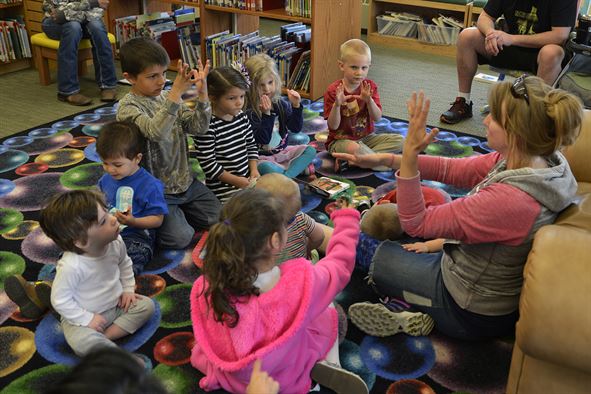When York University took over the province’s Deaf Teacher and Hard of Hearing Teacher Education Program 30 years ago, Professor Connie Mayer had no idea that the field would go through such dramatic changes.
Now, looking back, Mayer, who began her career as a teacher of the deaf, and her colleague, Professor Pam Millett, an audiologist, marvel at the evolution that has taken place.
“The field has gone through a seismic change and the program has responded,” says Mayer.
Ontario has had a program to prepare teachers of the deaf since the 1960s, a time when deaf children were generally educated in congregated classes in school boards or at schools for the deaf. In the late 1980s, the Ministry of Education made the decision to align the program with a university, and the program for certified Ontario teachers began in 1991. The program is the only one of its kind in Ontario and one of only three in Canada, and awards its graduates a post baccalaureate diploma.
In its early years, the Deaf and Hard of Hearing Teacher Education Program was a full-time, one-year program that required students to attend classes on the York campus. At that time, most teachers taught in classrooms using spoken language or a combination of spoken and signed language, or at schools for the deaf where American Sign Language (ASL) was the language of instruction.
Over time, major changes occurred in the field of deaf education, primarily as a consequence of universal newborn hearing screening and advancements in hearing technology (including cochlear implants). Historically, deaf children may not have been identified until preschool or even kindergarten age. This meant that some deaf children did not have the opportunity for language development in the early years.

In 2002, the Ontario government introduced hearing screening at birth for all newborns. Hearing loss is now typically diagnosed by 3 months of age, and early intervention services are put in place at that time. This provides much better opportunities for early language acquisition. Simultaneously, hearing technology was advancing by leaps and bounds, with hearing aids and cochlear implants providing more deaf children the ability to hear and learn to speak from a young age. As more than 95 per cent of deaf children are born to hearing parents, young deaf children are now more often able to acquire the spoken language of the home, whether that is English or another language. Many more deaf children are able to achieve typical language and literacy development.
The teacher education program has changed and adapted along with the needs of deaf children.
“Structurally, it’s similar: the number of courses required and the mandatory practicum,” says Mayer. “What’s changed is the content, which reflects the changes in the field.
“We’ve tried to meet the changing needs of the field and prepare teachers for the current educational environment.”
Adds Millett, “Kids now come to school with so much more language and conceptual knowledge.”

Today, teachers of the deaf generally don’t work as classroom teachers. Instead, they are supports and advocates for their students and work as itinerant teachers. This means that they travel between a number of schools to see a variety of deaf students in the area. They essentially become case managers, as well as teachers, liaising with each student’s classroom teacher and parents, as well as working with the student.
“Our students need a different set of knowledge and abilities today,” Mayer says. “They must serve a wide range of students from kindergarten to grade 12, providing the level and type of support that is needed for each individual student.”
These include assisting younger students with language acquisition and vocabulary development in spoken and or signed language; supporting literacy development for school aged students, and working with teens to develop their advocacy skills so they can speak up for themselves when they go off to university, college or the workplace.
The first task for a teacher of the deaf is to ensure that the student has access.” says Millett with a smile. “For example, one dead hearing aid battery can be a real problem.”
“Our role is to prepare teachers for the reality of teaching deaf and hard-of-hearing students in 2021. The need is not less, just different. Deaf or hard-of-hearing students still need services and support.”
The program staff consists of Mayer, Millett, practicum co-ordinator Melanie Simpson and a Program Administrator. Candidates for admission to the program must have a minimum of an undergraduate degree, a Bachelor of Education and certification from the Ontario College of Teachers.
In the early 2000s, the program instituted a part-time option, with some courses taught on campus in the evening. In 2008, the part time program was expanded to include online learning opportunities, a circumstance that increased the pool of potential applicants and left the faculty well-prepared when the pandemic led to remote course delivery for all classes.
“As a teacher, taking a year off without pay to attend a full-time program can be challenging and it prevented a lot of people from applying,” says Millett. “Now, with the online option, we have teachers from across the province enrolling.”
Each year, the program accepts about 20 students, but there is an ongoing cohort of 55 to 65 students, since many are enrolled part-time for three years.
“Our graduates are in demand,” says Mayer. “With very few exceptions, students graduate and have jobs waiting. Many of our part-time students are hired by their second year.”
Through all of the changes, two things have remained constant for Mayer and Millett: their dedication to ensuring that deaf and hard-of-hearing students across Ontario have the best possible teachers working with them and their own fervour for their work.
Their commitment and passion do York University proud.
Visit the Deaf and Hard of Hearing Program 30th anniversary website.
By Elaine Smith, special contributing writer
